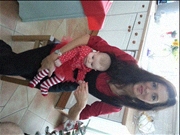Tutor HuntResources Biology Resources
Casting A Bit Of Magic Using Solo
Making information Stick!
Date : 22/06/2014

Uploaded by : Sarah
Uploaded on : 22/06/2014
Subject : Biology
The Quest!
The quest to make it stick! Isn't that what we all desperately strive towards as teachers; the magic formula to make the contents of that lesson stick and not dissipate the moment your class step foot outside of your classroom? How is it that some students can real off intricate details of football teams and scores and yet when asked a straight forward question on the content you taught two seconds ago, nothing! As a teacher, with an interest in Psychology, this quest has always appealed. Especially, as part of the Psychology AS syllabus is memory formation and revision techniques. Surely I'm one step towards the goal already?
And so with this in mind, I stumbled across SOLO taxonomy. SOLO, structure of the observed learning outcomes (Biggs 1995), is a ladder that signposts stages of learning going from superficial to embedded learning. The appeal of this taxonomy is that it is based on neuroscientists theory that learning and memory formation are made by the production and strengthening of connections between neurones. As you move up the ladder the type of thinking and tasks associated with those levels, involve greater degrees of connectivity between neural pathways and therefore, by default, create a memory that is more likely to last.
So what are these levels? The first rung is described as Pre-structural. This is characterised by a student who has misunderstood the idea (questionably no learning!). This is proceeded by the Uni-structural level; this is when one aspect of the task are picked up on or a unitary idea is understood. Multi structural is next. This is when several aspects of a task are picked up and used but the items are understood independently of each other. These levels of thinking are considered to be quantitative; you can assess the student by looking at how many pieces of information they can recall accurately. We then move into the realms of qualitative types of assessment and deeper levels of thinking. The Relational level involves a student who can demonstrate that they have an integrated understanding of the key points, essentially they can relate or compare the ideas. The upper most level is Extended Abstract. Here students can relate a topic to a topic that is out of the context that it is being taught in or they can generalise to a new topic. In terms of brain physiology, it is clear that as you progress up the taxonomy ladder, there is a greater involvement in different neural pathways, the taxonomy terminating in new connections being made between totally separate pathways. At this stage the memory is thought to be stuck!
Applications to practise
So in theory, it looked like I had found a possible answer; a visible route to deeper learning. So here is where the magic comes in! I wanted to see if I could use SOLO to plan a sequence of chemistry lessons and I wanted to assess its' success in terms of both attainment and motivation, in comparison to an equivalent ability class.
The lesson sequence was a year 7 scheme of work on particle theory and so I decided to set it in a context of Harry Potter. Each lessons outcomes were planned using SOLO and the Extended Abstract level of thinking was attained by students working independently at the end of the lesson, on a task that involved using these ideas and creating a magic spell that involved the lessons contents. In addition, the first lesson in the sequence involved teaching students the levels of thinking and how to identify these, in a lesson that involved making their own spell out of ingredients from home and then peer assessing using the SOLO ladder. In addition, to help embed the ideas, students were asked to work on an independent learning project that involved the extended abstract tasks from each lesson and incorporated them into asking students to design an escape plan for Harry and his army, from Lord Voldemort in their final battle at Hogworts. All lessons and projects were assessed for the SOLO levels and stickers were made with the thinking levels on to signpost the learning.
The outcome was astonishing. Recall rates from the assessment, were twice that in the Harry Potter class in comparison to other class. This pattern was consistent across all abilities in the class from those whose end of year target was a level 3 to those who were predicted a level 6! Qualitative assessment through questionnaires were 100% positive with all students reporting a greater level of engagement during this module.
So in conclusion, could this be the answer to the golden question? Teach students how to think and to assess themselves in their own thinking, using SOLO and a little bit of magic!
This resource was uploaded by: Sarah

